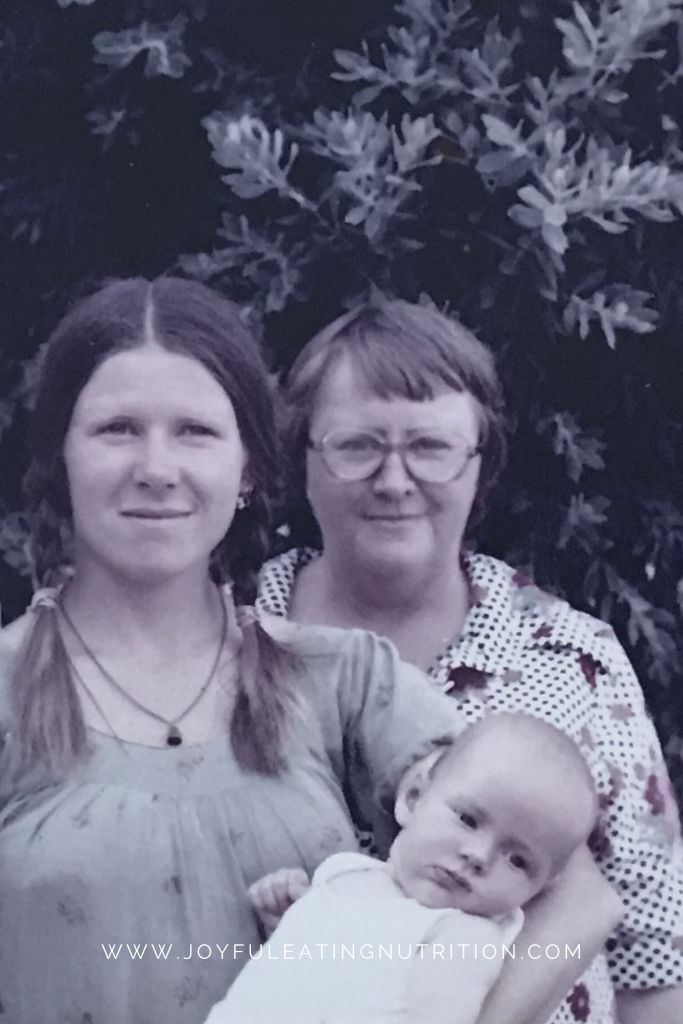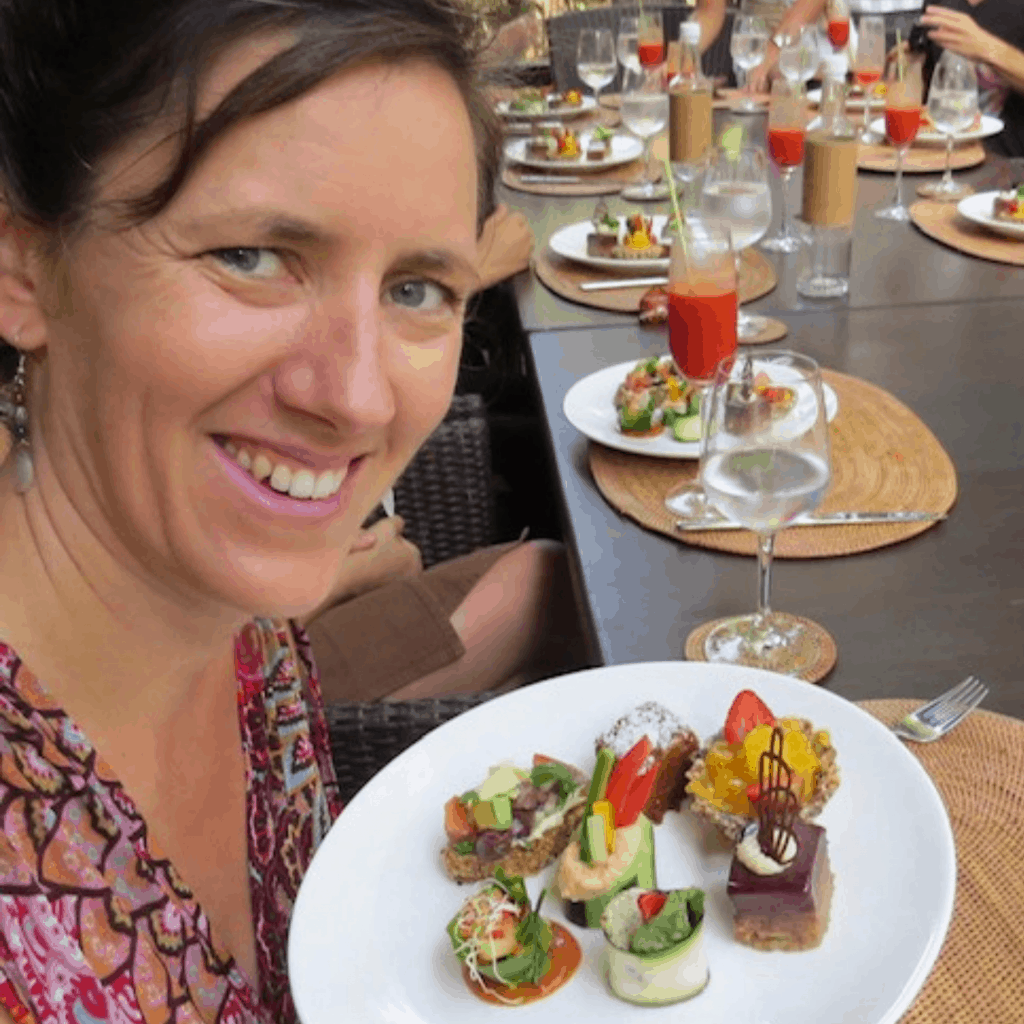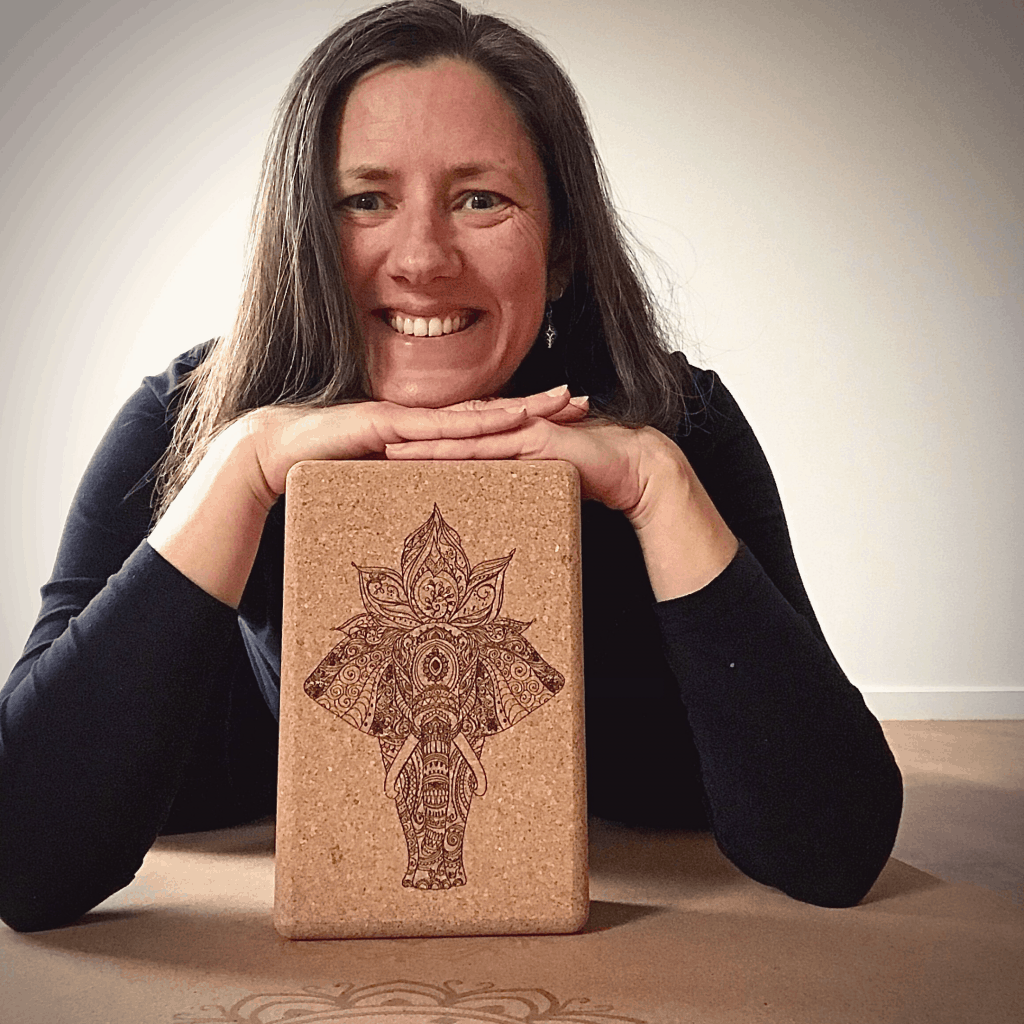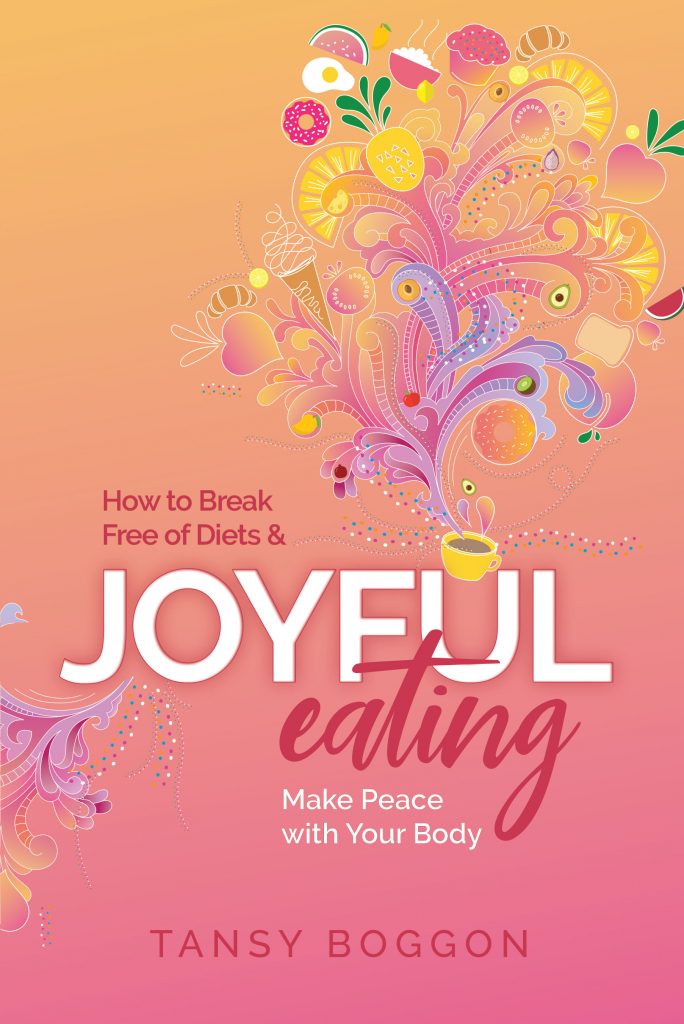Here I share an excerpt from my book Joyful Eating of my food and body story.
In Joyful Eating, one of the first things I encourage us to do is reflect on our food and body story, as it forms the lens through which our perception of our body and weight and relationship with food is formed. I also share my own story—the journey that has led me to support others to find peace with their body and food. I believe that hearing others’ stories can help us feel seen and less alone in our own struggles.
The below is taken directly from the book, Joyful Eating. However, I have added headings that do not appear in the book and have spaced out some paragraphs for ease of reading online.
Let me know if you resonate with any of my story. I’d love to know.
Love,
Tansy xx
Excerpt from Chapter 1: Unravelling Your Food and Body Story
My grandmother’s struggle with weight and her sense of self-worth
My maternal grandmother struggled with her weight her entire adult life and sadly died at far too young an age, due to what many in the medical field would consider obesity-related issues.
As one of eight children and growing up with financial hardship and an alcoholic father, she had a diminished sense of self-worth. As a beautiful young woman, she married my grandfather. He was an insecure man who inflated his ego by putting her down. His regular verbal abuse fuelled her sense of worthlessness.
My mother tells of coming home from school to find her mother, still robed in her dressing gown, sitting on the couch in the same position she had been in when my mother had left for school. To prevent a blow up between my grandmother and grandfather, my mother, as a child and teenager, would wash the dishes, put things away, brush my grandmother’s hair and help her to get dressed.
Even as a child, it was evident to me that my grandmother ate food to numb out from her painful life circumstance. Her weight fluctuated as she was either on or off a diet. She struggled with depression and diabetes, which contributed largely to her death.
My mother’s resolve to control her weight
Diabetes and obesity were prevalent in my mother’s family; her early experiences and knowledge of this formed the foundation of her relationship with food and her body. It’s therefore understandable that she had an immense fear of gaining weight and prioritised controlling her dietary intake.
When we were children, my mother made sure my sister and I were aware of our genetic propensity for obesity and our family traits of compulsive, emotional eating and overeating.
As inspiration and reinforcement that we had to control our weight, my mother would often recount the story of a cousin who turned his life around, reversing his Type II diabetes through diet and exercise.
Our mother made it clear that health was a choice and within our control. Her core method of controlling her weight was through her food intake.
The foundations of my relationship with my body and food
As children, we ate incredibly healthily compared to most households. We ate a vegetarian diet comprised of ample wholegrains, legumes, nuts, seeds, fruits and vegetables. Junk food was a rarity. Our treats were homemade cakes, cookies, pancakes or popcorn.
In spite of our wholesome diet, my mother would often forgo certain indulgences or make modifications to her servings to reduce fat or calories.
Despite their contrast—my grandmother, who was obese, unwell and unhappy, versus my mother, who prioritised healthy eating—I could see that they’d both struggled.
My grandmother often lost the battle with her weight and seemed out of control with her eating. My mother, on the other hand, lived with her weight constantly in front of mind and persistently attempted to restrict and control her eating.
Bearing witness to these contrasting relationships with food and body, I didn’t want to deprive myself of delicious foods like my mother, although I also feared the potentiality of gaining excess weight like my grandmother.
My attempt to control my weight and eating
After leaving home, I attempted to control my weight by restricting what I ate during the week, reducing my portions throughout the day and occasionally skipping meals.
I’d work out like crazy up to two hours a day, six days a week, in addition to riding my bicycle to work. Despite my intensive exercise regime, I often only ate a small handful of fruit and nuts for lunch. So, it’s no surprise that by dinner time I was often so hungry I’d mindlessly devour a huge bowl of pasta and cheese.
On the weekends I’d frequently eat excessive quantities of what I perceived to be treat foods. I’d devour entire containers of ice cream, large bags of chips and family size blocks of chocolate with my then-partner.
Although I immensely enjoyed these foods, each time I ate them it was in a way as if I’d never have them again. Essentially, I spent the week starving myself and the weekend gorging.
Yet my body just didn’t measure up.
I so badly wanted a flat, bikini-worthy stomach as depicted in women’s fitness magazines and I envied the girls who could confidently jump around in their sports bra in aerobics classes. The bikini body as depicted in magazines never eventuated.
I hadn’t realised it at the time, but this wasn’t the path to feeling content with my body.
My shift to choosing ‘treat’ foods I enjoy
In my late twenties, I travelled with my then-partner for ten months. Without the routine of work, it was hard to maintain an exercise regime and a sense of control over my eating. Inevitably, I gained a few kilos and increased a dress size.
During our travels, our relationship of eleven years came to an end. This emotional upheaval further increased my eating for comfort.
After returning to Australia, single and heavier than ever before, I realised that I couldn’t sustain my previous pattern of feast and famine. I decided that I had to try something other than depriving myself on weekdays and then overeating on the weekends.
In place of restricting specific foods, I focused on enjoying everything I ate.
I realised that I ate some foods in excess primarily because I believed that they were bad or naughty, rather than because I truly enjoyed them. I became aware of the foods I did enjoy versus the foods I ate just because I perceived them as a treat.
Enjoying food without having to eat it all
With this new focus, I chose to make or purchase the most delicious and gourmet version of the foods I enjoyed.
So, rather than my food purchases being about what was the best value for money, I purchased what would satisfy me and bring me the most joy. For example, a tub of ice cream may well be better value for money than a chocolate-coated ice cream on a stick. However, the chocolate-coated ice cream was more than sufficient to satisfy my desire for ice cream.
And at that stage, if a tub of ice cream was in the freezer I’d compulsively go for more, even if I wasn’t hungry or enjoying it: I would eat it simply because it was there.
I no longer focused on controlling my portions, but rather on being fully aware of the experience of eating, and my hunger and fullness cues. I was turning my attention inwards.
So, rather than external cues such as time of day or meal plans dictating my eating, it was guided by my internal sensations of hunger, along with the sensory experience of eating. I began to relish food and savour every mouthful.
I could enjoy tiramisu without eating as if it would be the last slice I’d ever have.
I didn’t realise it at the time, but I was embracing what I now call Joyful Eating.
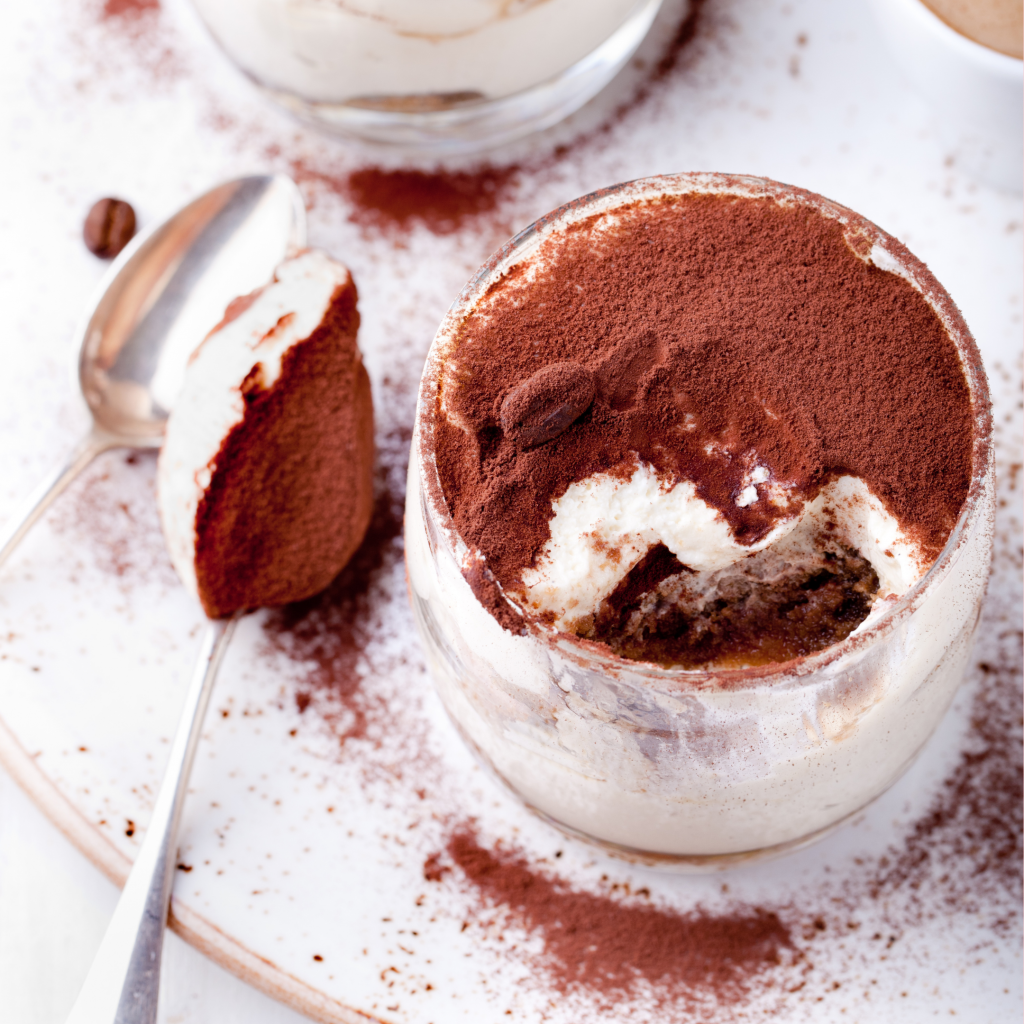
The start of my journey to Joyful Eating
Despite the shift that was occurring in my relationship with food, it certainly wasn’t smooth sailing. For many years, I continued to over-exercise to maintain a healthy figure.
Although I’d switched from obsessing over the quantity of food I ate, such as calories, portions and macronutrient proportions, to the quality of what I ate, I continued to attempt to control my diet.
At that time, I believed (as so many diet proponents proclaim) that eating specific foods, prepared in specific ways, was the answer to body satisfaction and health.
I researched and attempted traditional diets, raw food, metabolic diets, nutritional typing, blood type, low carbohydrate, sugar-free, gluten-free, juice cleanses, supplements and a number of popular and largely unfounded diets. These diets lured me in with declarations that restrictive calorie diets don’t work, but these diet plans did.
I can now admit that the raw food and gluten-free diet I faithfully followed for some years was driven predominantly by superficial reasons and the illusion they would provide optimal health.
Despite the alluring before-and after photos and promises of enduring health, these diets were just as restrictive and complicated as any weight loss diet.
I learned through self-exploration and later through my studies in nutrition that there is no perfect approach to eating for health.
Tunning in and learning to accept my body as it is
Then in 2009, a substantial shift in my perception of food and my body occurred when I undertook training as a coach and facilitator with ZoneHigh, an organisation focused on helping people reach their full potential. This training helped me understand and experience for myself how my state of being and beliefs influence my success, happiness and fulfilment.
I began to practise techniques to heighten my awareness in each moment. I noticed how this new awareness enabled me to hear what my body truly required and spontaneously take steps to nurture myself, unlike my previous controlling and stressful approach.
So, I started to let go of concerning myself about bulges here or there and turned my focus to feeling alive. I began to see how my rules and beliefs didn’t serve me but instead eroded trust in my own body.
Letting go of controlling my body and eating
Letting go of the need to control my body, I discovered that I didn’t need to exercise so intensely to maintain my health and fitness. Rather than exercising to burn fat or sculpt my body, I now choose movement that enables me to feel strong, flexible and energetic, as well as movement that reduces aches and pains that result from sitting for long periods.
No longer do I feel the need to push my body to achieve results. If I’m tired, I may rest, gently stretch or go for a slow walk. In comparison, years ago I’d drag myself to the gym, workout too hard and potentially end up too sore to work-out for days, often coming home with a seemingly uncontrollable appetite.
I discovered that I didn’t need to restrict and control my eating to eat right for me, but rather quieten my mind and tune into how my body responds to what I eat. Along with this, I accepted that I don’t control how my body responds to the foods I eat or the exercise I do.
Ditching the diet and food rules
Once I dropped my diet and food rules, I didn’t crave what I’d previously perceived as unhealthy foods so much.
I can sit and enjoy a slice of tiramisu without the voice in my head driving me to eat more, telling me that there is more in the fridge. I can now tune into my body and decide whether I will eat more or stop eating, based on internal cues.
I’ve let go of using external measures such as the scales or tape measure to assess my success or dictate my happiness. These were never great motivators for me anyway.
If I weighed myself and there had been no change, or I’d gained weight, I’d feel like a failure and consequently unmotivated: as it wasn’t worth the effort to continue.
If I’d lost weight, I’d think, now I have lost the weight, I’d better keep it off. As a consequence, I’d feel greater pressure to keep up the restrictive eating, and at times I’d push myself even harder to attain my goals.
Inevitably, I’d relapse to my familiar and comfortable eating patterns and exercise regime, as the hard work became overwhelming or unsustainable.
Eating with awareness rather than food rules
Now, I eat (or don’t eat) foods available to me based on how I feel in the moment and with an awareness of how certain foods may make me feel.
Sometimes when I eat what I’d previously perceived as a treat food, I can take a bite or two and think, that’s enough. Other times I may think, this isn’t as delicious as I thought it would be, or it’s not what my body wants right now. There is rarely the thought, I shouldn’t eat this, or it’s so unfair that I can’t have this. I no longer feel guilt for what I’ve eaten or a need to compensate for my eating.
My journey was gradual as I reflected and considered many disciplines to shed light on my relationship with food and my body.
Later in my journey and as I began to support others, I discovered non-diet approach, intuitive eating, mindful eating and Health at Every Size®. Although these were not instrumental in my journey, they align with the approach I took and share in this book.
[Also see does mindful eating help with weight loss]
Sharing my journey and what transformed my relationship with my body and with you
Through listening to my body and emotions, my relationship with food and my body is now far more joyful and balanced.
I acknowledge that my relationship with food and my body is constantly evolving. I believe it’s a lifelong journey.
Over the years my circumstances will change, as too will my body.
However, I no longer feel the pressure to control my body.
I used to believe it necessary to criticise my body to control my weight. I’ve learnt that this is untrue and that the opposite may be true.
As a consequence of my journey and what I’ve learned along the way, I now aspire to help others like my grandmother, my mother, myself and you, end the struggle with food and discover how body acceptance and embracing the joy of eating can free you of dieting, guilt and shame. I’m delighted that you’re here to join me.
A deeper (more personal) dive into my food and body story and how it led me to write Joyful Eating
Let me know if you resonate with any of my food and body story
Let me know if you resonate with my food and body stories in the comments below.
You can also learn more about my journey to joyful eating in the blogs:
Are you ready to transform your relationship with food and your body?
You can download the next chapter of Joyful Eating, Debunk the Diet Myth, for free as a PDF document or purchase the book directly from my website or most other online booksellers.
I am so pleased you are here with me, as we are not alone in our struggles. Hearing one another stories can be freeing and empowering.
Love,
Tansy xxx

